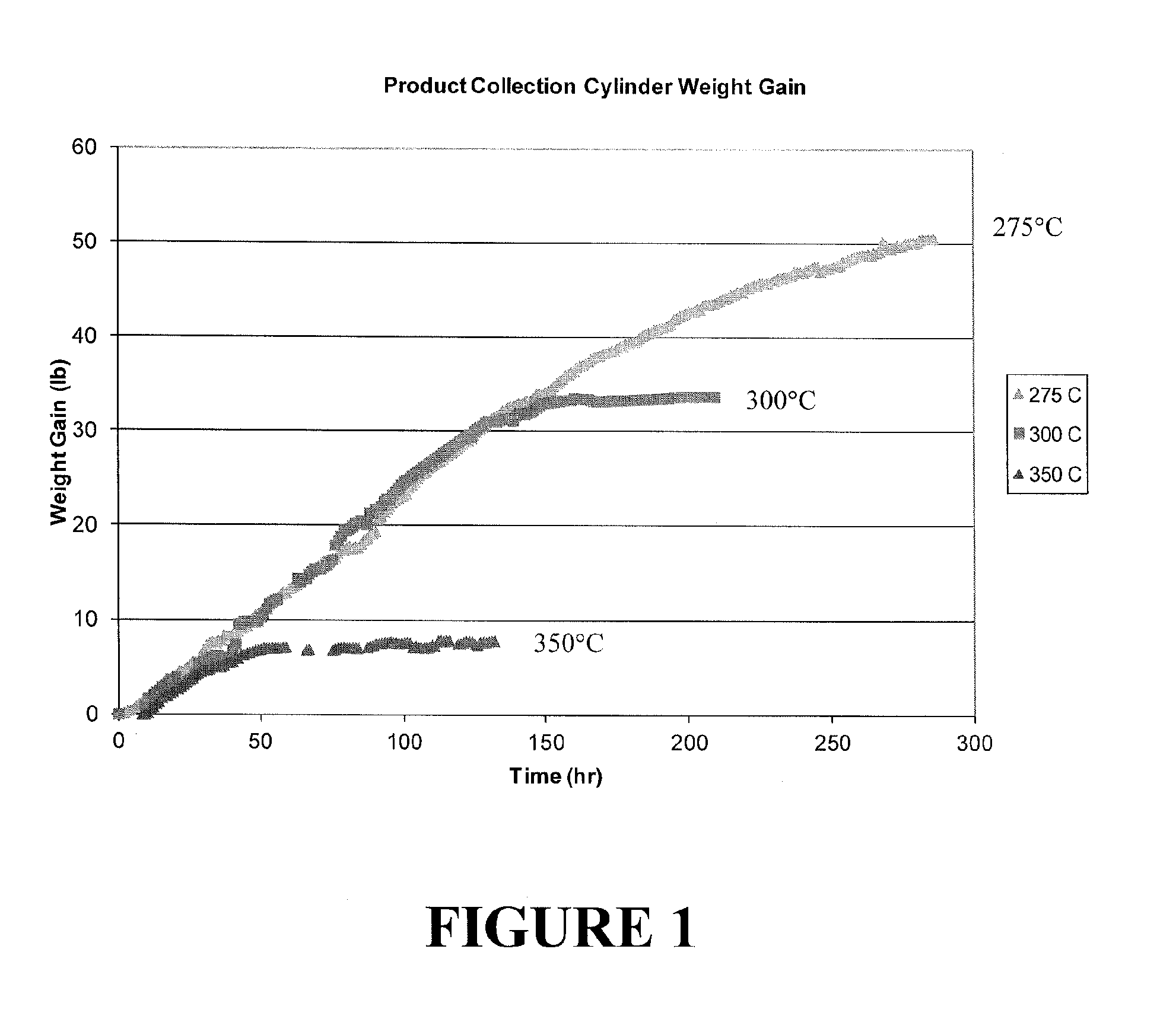Process for producing 2,3,3,3-tetrafluoropropene
a technology of tetrafluoropropene and process, which is applied in the field of process for preparing fluorinated olefins, can solve the problems of high temperature handling of hydrogen gas at commercial scale, low yield of process, and high cost of commercial hydrogen gas production, etc., and achieves reduced compound selectivity, reduced catalyst selectivity, and increased undesirable by-products or impurities
- Summary
- Abstract
- Description
- Claims
- Application Information
AI Technical Summary
Benefits of technology
Problems solved by technology
Method used
Image
Examples
example 1
[0045]This example illustrates the continuous vapor phase fluorination reaction of 1,1,2,3-tetrachloropropene (HCO-1230xa) to 2-chloro-3,3,3-trifluoropropene (HCFO-1233xf). The fluorination catalyst for the experiment was fluorinated Cr2O3.
[0046]A continuous vapor phase fluorination reaction system consisting of N2, HF, and organic feed systems, feed vaporizer, superheater, 2 inch ID Monel reactor, acid scrubber, drier, and product collection system was used to study the reaction. The reactor was loaded with 1.8 liters of catalyst. The reactor was then heated to a temperature of about 180° C. with a N2 purge going over the catalyst after the reactor had been installed in a constant temperature sand bath. HF feed was introduced to the reactor (via the vaporizer and superheater) as a co-feed with the N2 for 15 minutes when the N2 flow was stopped. The HF flow rate was adjusted to 1.9 lb / hr and then 1,1,2;3-tetrachloropropene (HCO-1230xa) feed was started to the reactor (via the vapori...
example 2
[0047]All were the same as in Example 1 except that temperature was not raised above 300° C. and pressure was 70 psig in Example 2. The reaction was started at 200° C. As the catalyst was deactivating, temperature was increased in 5° C. increments up to 300° C. Table 1 shows conversion, selectivity to HCFO-1233xf, and selectivity to compounds other than HCFC-244bb, HCFO-1233xf, and HCFO-1232xf as a function of temperature. In general, as catalyst deactivates the selectivity to HCFO-1233xf drops accordingly. As shown in Table 1, increasing temperature beyond 250° C. helps maintain the selectivity to 1233xf high. Selectivity to others is low at reaction temperature 275° C. The deactivation rate is significantly higher for temperatures >250° C. than for temperatures <250° C. The reaction was continuously run for about 1378 hours and 693 lb of HCFO-1233xf and HCFO-1232xf was produced. The average conversion of HCO-1230xa and the average selectivity to HCFO-1233xf were 90.3%, and 87.1%, ...
example 3
[0048]This example illustrates the temperature effect in continuous vapor phase fluorination reaction of 1,1,2,3-tetrachloropropene (HCO-1230xa) to 2-chloro-3,3,3-trifluoropropene (HCFO-1233xf). The experiments included in this example were carried out at temperatures higher than 250° C. in the same reactor system as described in Examples 1 and 2. Another batch of fluorinated Cr2O3 catalyst was used.
[0049]Different from Examples 1 and 2, the reaction temperature was fixed at pre-set point and the reaction was run until catalyst lost its activity. The catalyst was then regenerated and the reaction was re-started at a new temperature. Three different temperatures, namely, 275, 300, and 350° C., were studied. Reactor pressure was 100 psig and flow rates of HF and HCO-1230xa were 1.7 and 0.5 lb / hr. respectively. The HCO-1230xa feed contained no di-isopropyl amine. FIG. 1 shows weight gain in PCC (Product Collection Cylinder) as a function of time at three different temperatures. The slo...
PUM
| Property | Measurement | Unit |
|---|---|---|
| Temperature | aaaaa | aaaaa |
| Temperature | aaaaa | aaaaa |
| Temperature | aaaaa | aaaaa |
Abstract
Description
Claims
Application Information
 Login to View More
Login to View More - R&D Engineer
- R&D Manager
- IP Professional
- Industry Leading Data Capabilities
- Powerful AI technology
- Patent DNA Extraction
Browse by: Latest US Patents, China's latest patents, Technical Efficacy Thesaurus, Application Domain, Technology Topic, Popular Technical Reports.
© 2024 PatSnap. All rights reserved.Legal|Privacy policy|Modern Slavery Act Transparency Statement|Sitemap|About US| Contact US: help@patsnap.com








